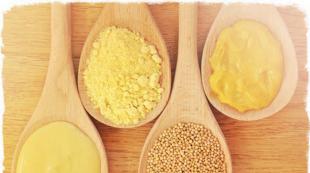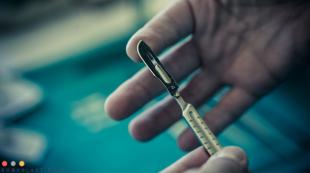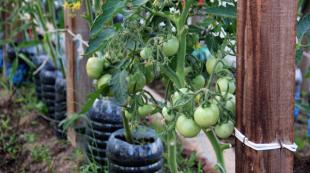Tiling wooden floors in wet areas. How to tile on a wooden floor How to tile on a wooden floor
In many houses, the floor is made of joisted floorboards. When walking, it bends, so proper styling tiles or porcelain stoneware on a wooden floor becomes a no-brainer. In this article, we will tell you how to lay tiles on a wooden floor and how to prepare the base.
Unlike wood, tile has a number of advantages. Its qualities are excellent for use in the hallway, kitchen, bathroom and toilet. Tile:
- does not ignite;
- non-toxic;
- not afraid of contact with chemical solutions;
- withstands heavy loads;
- does not conduct electricity;
- does not lose appearance from moisture, sunlight or frost;
- ceramics is unpretentious in cleaning.
The main drawback of the tile is the cold surface, so it will not be very pleasant to walk barefoot. To get rid of this, often use underfloor heating. installed even on wooden base.
Laying process

Installation of tiles is designed for a durable and hard surface. Therefore, first you need to survey the existing floor.
As a rule, old floors consist of several layers:
- coating (laminate, linoleum, parquet, painting);
- substrate (chipboard, boards, plywood), which is fixed on the logs;
- Logs that lie on a concrete base along the entire floor with a gap of about 50 cm - they serve as the frame of the structure.
Wood floor preparation
First option
Suitable for those who have and bends.
- Remove old coating and backing. If the old lags are in good condition, then you can leave them as a basis.
- Remove the floor sheathing with a nail puller. Then set the logs on the substrate in a horizontal position using a level.
For greater preservation of the tree, treat the logs with a protective impregnation.
- Fill the logs to the upper level with fine expanded clay. This will prevent the boards from bending when walking.

- We sheathe the surface with boards (see article about) or thick plywood. Boards should be fastened with 2 self-tapping screws about 5 centimeters long.
- For ventilation, leave small gaps between the boards or then drill holes.
- We lay parchment paper on top of the boards and lay a new substrate. For this, gypsum fiber sheets with a thickness of 20 millimeters or a cement-bonded particle board of 10-20 millimeters are suitable. Sheets need to be fastened in a run-up using self-tapping screws around the perimeter of the lags, in increments of 15-20 cm.
- The gap between the wall and the floor can be filled with mounting foam.
- Now prime the surface and lay the tiles as you would a normal floor.
Second option
Suitable for those whose floor is in poor condition, but the conditions allow for a screed.

- Remove old floor covering. To prevent moisture from penetrating inside, the wooden floor is waterproofed under the tile.
The easiest way to waterproof is to use a plastic film. - Using a laser or water level, mark the horizontal line of the floor around the perimeter of the room.
- At a distance of about 1 meter from each other and about 10 centimeters from the walls, install beacons. To do this, use metal profiles, screwing them to the concrete with dowels.
- The screed is made either with a solution of cement and sand (composition: 1 part of M-400 cement to 3 parts of sand), or cast concrete.
- The average consumption will be approximately 15 kg per sq. meter with a layer of 1 cm.
- If you need to fill in too large a layer, then first pour expanded clay between the beacons, 2/3 of the layer thickness. Fill with a screed and wait for drying during the day.
- After drying, clean the surface from the floating expanded clay. Prime and fill with mortar. This time you need to align it with the lighthouse rule so that the floor is even. Start leveling from the far corner towards the exit.
- After three days, prime the screed and preferably fill it with a self-leveling mortar.
- All! The screed is ready - now feel free to proceed with the usual methods.
Third option
Suitable for those who have a floor in good condition and sheathed with chipboard sheets.
- Waterproof the gaps between the wall and the tree with mounting foam.
- Soak the chipboard several times with protective impregnation or heated drying oil (be careful, this is flammable).
- Then apply a thick layer of latex to the chipboard surface.
- Immediately after applying it, place a masking net on the surface, and leave to dry.
- When the latex dries, the mesh must be fixed with screws to the floor.
- Treat the surface with a mixture of the following composition: 1 part water, 2 parts liquid glass, 2 parts coarse sand.
- It is advisable to additionally level the surface with a self-levelling mortar. When everything is dry, tiles are laid on the wooden floor.
Video on laying tiles on a wooden floor in an apartment:
That's all the basic methods on how to lay ceramic tiles on a wooden floor. As you can see, this is not an easy task, which will require a lot of additional preparation. And if you put a tile directly on a tree, the tile will quickly crack and fall off due to constant movement.
Installation success and long service life floor covering 50% is determined by the competent preparation of the base. According to clear building regulations, only a perfectly leveled surface that can “hold” the weight of ceramics and its own stable position can become a worthy base for tiles. Due to the fact that the “windy coquette” of wood does not tend to remain constant, laying tiles on a wooden floor has long been considered a pointless procedure. However, there are building schemes, the use of which can reconcile the "playful" nature of the building material with the tough temper of a tiled or clinker finish.
How to reconcile ceramics with a wooden base?
Due to the organic origin of wood, it cannot be attributed to "unshakable" building materials. It shrinks from a lack of moisture, swells from an overabundance. A new wooden floor still settles for one and a half to two years after construction, and even after the expiration of the post-construction shrinkage period, advances still occur. Movement imperceptible to the human eye negatively affects the solidity of the tiled surface. Structural bonds are broken, tiles peel off and crack. As a result, not only all the work goes down the drain, but also a lot of money invested in finishing.
This means that the task of a home-grown finisher is to create a kind of damper layer that dampens the characteristic movement of wooden elements. With a solid outer part, this layer must be turned towards the ceramic coating, and the elastic rear must be substituted for the pushes and blows of the wood. In addition, the wood covered under it needs to breathe, otherwise it will quickly rot, defeated by fungi and mold.
Preparatory stage - preparation of the base
By a wooden floor, we certainly do not mean only plank floorboards that can be seen from the outside. This is a multi-layer structure, consisting of powerful beams laid "in a cross" along them with a log and a substrate located under the boards. Before tiles are laid on a wooden floor, all elements of this complex-composite system must be carefully examined and tested.
Revision of the wooden base
Since the finishing of a new wood floor is recommended to be done exclusively with a tongue-and-groove board, it is not difficult to guess that it is necessary to analyze the floor for revision. After all, the floor with wooden floorboards has already served. The lack of squeaks and wobbliness of the boards is no excuse for laziness. It is possible that the already brewing problem can simply not be felt.
Attention. If the joists have been laid in increments of more than 50 cm, the floor will need to be completely re-laid, otherwise it will not support the weight of the ceramic screed.
Let us assume that the design satisfies us completely. Then we carry out revision, repair and preparation in the following sequence:
- removing existing flooring
- we check beams and logs, replace damaged or starting to rot elements;
- check the horizontal position and carry out the alignment;
Note. If you raise the log in the usual way - by driving a wedge or lining sawn timber under it, it is impossible, the board must be sewn on top, then the excess is cut off, focusing on the level readings.
- we generously process all the components of the wooden floor with antiseptic impregnations, best of all with mastics indicated in technical specifications maximum update frequency;
- after the antifungal impregnation has dried, we fill all the spaces between the lags with expanded clay of a fine fraction. We fill up the insulation so that between the top line of the lag and the surface of this heat insulator there is 5 cm left for ventilation;
- we are preparing the floorboards for re-laying, they will serve as a rough base, since GVL or waterproof plywood, despite the convincing assurances of the manufacturers, will not withstand intense exposure to moisture and repeated temperature fluctuations. Although dry leveling with drywall, chipboard or plywood is quite suitable for arranging a bathroom, a small sauna kitchenette and a rest room;
Attention. Those who wish to tile on a wooden subfloor covered with used boards must remove the paint or varnish from the floorboards. It is easier and cheaper to remove the coating with sandpaper or a sharp scraper. Can be quickly removed with a special chemical “wash” or a hair dryer that softens the protective and decorative coating.

- we lay back the boards that have become rough, leaving gaps of 3-5 mm between the floorboards to ensure the probable expansion of the subfloor. We fasten the boards with galvanized self-tapping screws (one in each ordinary log, two in the last ones);
- in the presence of small defects, holes from the former fasteners or knots, they must be puttied;
- the laid subfloor is leveled with a grinder or corny sanded if leveling is not required;
- a centimeter technological gap should remain along the perimeter of the floor. We fill it with silicone mounting foam or glue it with a polymer membrane tape (we bend a 30 mm strip of the membrane in half, fasten one part to the lower edge of the wall, the second to the floor);
- the gaps between the boards, between the sheets of plywood, if it was used to level the floor in “dry” rooms, we also fill it with mounting foam or glue the membranes with tapes;
- to form a monolithic insulating layer, we process the subfloor with heated drying oil or latex impregnation without the notorious savings.
Note. Instead of mastic, you can use parchment paper, bituminous or waxed roll analogue.
If it was decided to carry out waterproofing with drying oil or impregnation, and not with roll insulation, without waiting for their final drying, the surface to be prepared must be completely covered with a masking net. This will create a continuous insulating layer for laying tiles on a wooden floor, protecting it from moisture and compensating for the effects of wood movement.
Lightweight tie device
Now you need to form a solid rigid base for the ceramic floor cladding. This will be a standard screed, but lighter and more refined, since the wood does not need extra pressure at all.
The basis for laying porcelain stoneware, clinker or tile on a wooden floor can be arranged in three ways, these are:
- Pouring a standard cement screed, the thickness of which does not exceed 3 cm. First, we lay a metal mesh over the waterproofing and fasten it with screws to the rough base, then we fill in the traditional cement mortar, which can be replaced with a polymer screed.
- Instead of the compositions intended for the formation of the screed, we use KS glue with a base of liquid glass. A two-component polyurethane adhesive will do instead. It will also create an elastic layer after polymerization, which prevents cracking of the tile from the deformation vagaries of wood.
Note. A solution with liquid glass for pouring the screed can be made with your own hands. To do this, you need to mix one part of water, two parts of washed and sifted coarse sand and two parts of liquid glass.
- In the "dry" rooms of the bathhouse, you can make operational dry leveling with DSP boards or moisture-resistant drywall. We lay them “in a run-up” at an angle of 30º to the direction of laying the draft boards so that the butt seams do not match. The seams can be additionally glued with a composition designed to work with gypsum boards.
Description of the technology of the tile laying process
Before gluing, we will make a preliminary “fitting”, we will figure out how to lay the tiles on the floor more beautifully. Cutting cannot be avoided, but it is better to place the cut parts in shaded areas and on the periphery of the room. Therefore, we will start the preliminary layout from the central part and from the most illuminated zone. We will immediately determine how many tiles will need to be cut, and prepare them in advance. If you do not need to cut a lot of tiles, stock up on a tile cutter. For numerous trimming of tiles, you will need a grinder.

Further steps for laying ceramic tiles on a properly prepared wooden floor are no different from standard methods, so:
- To begin with, it is recommended to find the center by crossing the diagonals. We divide the room into four equal segments, outlining the directions with a coated paint cord along the walls or diagonally, depending on the chosen layout scheme.
- We prepare the glue in the strictest accordance with the manufacturer's instructions. We do not dilute it more than is required to finish 1 m² of floor.
- The solution is applied with a spatula-comb to the floor surface. The size of the teeth of the comb tool depends on the dimensions ceramic elements. For a large tile 0.8 mm, for a smaller one.
- We lay the tiles on the surface treated with glue, inserting plastic crosses into the butt joints, in extreme cases, matches.
- We constantly control the longitudinal and transverse directions, as well as the horizontal position, by applying a bar to several tiles.
Note. It is possible to level the masonry and correct the shortcomings only until the adhesive solution hardens. Longitudinal and transverse directions can be adjusted by slightly shifting. The "sunken" tile must be separated, the missing mortar added and laid again.
All adhesive "bloopers" from the surface of the tile must be removed with a damp cloth, without waiting for the solution to seize. After the laying is completed and the glue has hardened, the seams are moistened and rubbed.

Ceramic tile has long been one of the most practical and beloved floor coverings, and its current availability and variety are increasingly pushing the boundaries of the use of this environmentally friendly finishing material.
The ideal base for laying tiles on the floor is concrete or at least a cement screed. But what about people who have a wooden floor in their house?
There are two scenarios here:
- There is a need to lay tiles on a wooden floor in a house with concrete floors.
- The same question needs to be solved by a person living in an old house, where all the floors are wooden (and not only attic, but also between floors).
As for the second option, the answer is unequivocal - you should not do this.
Tiles - the material is quite heavy, and in old houses with wooden floors load-bearing beams should not be overloaded.
In 75% of cases, they are already in emergency condition by now. Therefore, a tiled floor is allowed here only when the house has passed overhaul and ceilings were replaced with new ones. Nowadays, the load-bearing beams in such houses are often changed to metal ones.
If the floors are concrete and the floor is wooden, then this possibility is allowed.
But here, too, some research will have to be done. Having decided to install a tiled floor on top of a wooden one, you need to be fully aware of how such an undertaking can end in case of poor preparation of the base and improper performance of work.

- The tile is laid on glue. This creates a sealed surface that does not allow air to pass through. And for wood, good ventilation is critical, which prevents it from getting wet and rotting.
- Wood itself is an unstable material that changes its state and size under the influence of environment. Time is not good for her either. Therefore, sooner or later, in conditions of high humidity or temperature fluctuations, the wooden base may acquire mobility, which will cause cracking of the adhesive layer (and possibly tiles) and peeling of the ceramic coating.
Therefore, before deciding on a tiled floor over a wooden one, you will have to examine the condition of the floor and the lag.
Floor condition survey
Start your survey in a simple way- walk along it, gradually covering the entire surface. Your task is to find the places where the boards "play".
This could mean the following:
- boards are poorly fixed to the lags;
- the boards have already been damaged and are possibly rotting;
- the logs sagged due to damage to the wood or the linings just fell out from under them.
Any of these options means that the floor in these places will have to be opened and the necessary repair work. If the floor seems to be durable - it doesn’t creak and doesn’t “breathe”, then you still need to open it in some corner. This is necessary in order to make sure that there are no signs of rot on the boards and logs or places damaged by woodworms.
If you find even the slightest traces of damage, tiles cannot be laid on such a base.
In this situation, it is easier to remove the entire wooden floor altogether and arrange the tiled floor as usual - directly on the concrete, having previously leveled it. If the floor boards are cracked, but not rotten or loose, then they can be used.
Depending on the condition of the floor, surface preparation for tiles must be done in different ways.
There are several options for the development of events:

- quick preparation of the base;
- device wet screed over a wooden floor;
- surface leveling without dampness and dirt.
The quick preparation of a wood floor can only be used when the wood floor is in near perfect condition: it is sound, dry and sufficiently even.
To perform the preparation, you will need moisture-resistant drywall and polyurethane adhesive, which has high elasticity, which will subsequently level out possible movements of the wooden base.
The work is carried out as follows:
- The floor must be carefully examined for compliance with its horizontal level. If there are differences, then they must be leveled with fiberboard or cardboard of suitable thickness.
- Two layers of GKVL are mounted on a flat wooden base in such a way that the joints of the sheets in the upper and lower rows do not coincide. In this case, it is necessary to observe a technological gap of 10 mm between the wall and the floor surface.
- Joints of drywall sheets must be filled with sealant.
- Then the surface is primed.
- After the primer has dried, you can lay the tiles in the usual way.
- After carrying out all the work, the gap between the floor and the wall is sealed with a plinth.
This method is not used in rooms with high humidity - bathrooms and kitchens. Its advantage is the high speed of work and the relative cheapness of the preparation of the base.
 The "wet" method is practically no different from pouring a conventional cement-sand screed. But here it is necessary that the wooden base be strong enough, since the screed has big weight. If the floor is mounted from boards with a thickness of less than 40 mm, and even the logs are located far enough from each other (more than 400 mm), then this method will not work.
The "wet" method is practically no different from pouring a conventional cement-sand screed. But here it is necessary that the wooden base be strong enough, since the screed has big weight. If the floor is mounted from boards with a thickness of less than 40 mm, and even the logs are located far enough from each other (more than 400 mm), then this method will not work.
For the screed device can be used as cement-sand mortar, laid with a thickness of not more than 30 mm, and self-leveling mixtures on a cement or polymer basis. Their use allows you to get a screed with a thickness of not more than 10 mm, which is important for small apartments with low ceilings.
Work is carried out as follows:
- The condition of the floor is carefully assessed.
- If the boards are thick enough and the support logs are located on a small state, then the existing floor can be used. If the logs are rare, then it is necessary to strengthen the floor structure with additional bars installed between the logs.
- In such a situation, it is necessary that the subfloor boards are located at a distance of 8-10 mm from each other. This will provide better ventilation. So in any case, the floor will have to be opened.
- On the floor with gaps, you need to lay chipboard or plywood with a thickness of at least 12 mm. The sheets are attached with "ligation" of the seams at a distance of 2-3 mm from each other.
- Next, it is necessary to waterproof the surface by laying a plastic film or other waterproofing materials. Waterproofing should go to the walls to a height of 7-10 cm.
- Next, the screed is poured.
- After the screed has gained strength, you can lay the tiles.
 As you can see, this method requires a lot of labor, but the foundation will be strong and reliable.
As you can see, this method requires a lot of labor, but the foundation will be strong and reliable.
The dry foundation device is widely used both by professionals and when working on their own. This will require chipboard or plywood. If the leveling material will be mounted on the surface of the boards, then its thickness must be at least 22 mm. If the floor is bad and the material will be attached to the logs, then its thickness should be at least 30 mm.
Installation is carried out as follows:
- Plywood sheets are cut into 4 squares - this will relieve internal stresses in the material.
- If plywood is attached to the logs, then the distance between them should be no more than 400 mm. If it is larger, then additional supports should be installed - this will increase the rigidity of the base, and the plywood will not sag.
- Plywood is mounted in a checkerboard pattern - with a shift of sheets in adjacent rows. Wood screws are used for fastening.
- During the installation of the base, you need to constantly check its horizontal position - this will allow you to lay the tiles without any problems.
In the event that it was not possible to purchase thick enough plywood, you can use thinner material, but you will have to lay it in 2 layers, gluing them together. The seams of these layers should not match. Between the sheets it is necessary to leave a gap 2-3 mm wide. A technological gap of 10-12 mm wide is also observed between the wall and the floor structure. At the end of the work, it is filled with sealant or mounting foam, and then closed with a plinth.
Before tiling the surface, plywood or chipboard must be cleaned of dirt, sanded and removed from all dust.
After that, the base is treated with an antiseptic and waterproofing is arranged. To improve the adhesion of the tile to the base, you can fix a sickle or painting grid on it, and then prime it.
 Since the installation of a tiled floor on a wooden base is already a rather controversial method, in order to achieve good result not worth saving.
Since the installation of a tiled floor on a wooden base is already a rather controversial method, in order to achieve good result not worth saving.
- Purchase only high-quality materials from trusted suppliers.
- Do not use materials such as liquid nails, liquid glass, a mixture of polystyrene foam with nitrocellulose varnish for fixing tiles (such recommendations can be found). At the same time, a qualitative result is not at all guaranteed.
- Buy good glue, suitable for working with the base that you have mounted. Not every tile adhesive is suitable for sticking tiles on plywood or chipboard.
- Do not prepare a lot of solution at once - it seizes quickly, and you may not have time to work it out. Follow the technology of work - haste can be costly.
Ceramic tiles are an excellent material for flooring, especially in rooms with high humidity or with a high probability of liquids or other substances on the floor. Typical examples are bathroom, toilet, hallway, kitchen. They do not refuse to lay tiles in residential premises, if the floor is equipped with a heating system.
But what about the owners of private housing, in which all floors originally wooden? A similar question may arise for owners of apartments of old buildings, where boardwalk mounted on joists. Is it possible to lay tiles on a wooden floor?
You can immediately reassure those who are worried - this is a completely feasible operation that does not require complete dismantling of the coating to the ground or concrete base, followed by pouring a thick concrete screed. True, you will have to work hard, since the success of such a reworking of the coating will mainly depend on the quality and strength of the wooden base.
Taking on the laying of tiles, if there is at least any, even the smallest, suspicion of the instability of the wooden base is the height of recklessness. This is explained simply:
- Wood is a fairly flexible material, tending to assume its original configuration after deformation. But what is “forgivable” for a wooden floor (slight deflection, springing, etc.) absolutely unacceptable for ceramics. Each individual tile is very rigid, not bendable. In the case of a “game” of the floor, it can simply crack.
- Another case is if, for example, ceramic tile small format. cement-containing tile adhesive also does not like dynamic bending loads. It will definitely go into small cracks, begin to delaminate, and the tile, even retaining its integrity, will simply move away from the base.
At the same time, one should not forget that the load on the coating will increase significantly - in addition to everything else, ceramic tiles themselves, mortars, and other possible structural elements of the created multi-layer “pie” of the floor have considerable weight. Thus, the wooden base must have guaranteed static. This is what needs to be achieved at the first stage of work.
It is clear that the first step is always a thorough visual inspection, making efforts on the most problematic areas of the wooden floor in order to identify its possible vibrations and sources of squeaks. If there are any, then questions should not arise at all - the coating is subject to a thorough sorting and repair, and not only in places of instability, since strengthening the floor in one place does not guarantee that it will not appear in another. It is necessary to understand the cause, and eliminate it at the root.
Sometimes after dismantling the floor, a "terrible" picture appears
Moreover, experienced craftsmen always advise, in all cases of laying tiles on a wooden base, to carry out its complete enumeration. If a ceramic coating is planned, then one must think that this is for the long term, and not for a year or two. Where is the guarantee that a defect or the process of wood decomposition that has begun today, which does not manifest itself in any way today, will not be detected in just a month or even a year, when the tiled flooring is already fully laid? To carry out repairs, you will have to remove all the tiles, dismantle the wooden base - and all due to the fact that proper integrity was not shown during the preparation. Isn't it better to be completely, 100% sure of the reliability and stability of a wooden floor before you start laying tiles?
Let such a prospect not be particularly frightening - compared to the complete dismantling of a wooden floor and pouring a new concrete screed to replace it, this procedure is much simpler, requires much less labor and financial investments.
So, the usual scheme of a wooden floor is a plank flooring mounted on logs. The logs themselves can be installed on a concrete base. Another option is that they are a double wood cladding system, with a rough and finished floor and a space between them that can be filled with thermal insulation material. With any kind of floor revision, the boardwalk will have to be completely removed in order to open the logs for their inspection, repair and alignment.
- If the condition of any of the logs causes even the slightest concern - there are cracks or areas with signs of wood decomposition, it is subject to unconditional replacement.
- In the case when the distance between adjacent lags exceeds 500 mm, it will be necessary to install additional bars, otherwise even the thickest floorboard may bend in this place.
- Be sure to align the lag horizontally. If they are securely embedded, and there is no way to change the height of the supports, this can be achieved. urging using a planer, or, conversely, building it up with a wooden plank.
- Of course, if there is a subfloor, it should also be given a certain repair - replace dilapidated or cracked boards, eliminate possible distortions, squeaks, etc. When it is ready, both it and the logs are covered with a layer of dense waterproofing film.
- If it has already become possible to get to the log and the subfloor, you should take the opportunity and treat all the details with antiseptic and water-repellent compounds. You should not write off your unwillingness to carry out this procedure on the fact that similar processing was carried out earlier, during the initial laying of the floor - the compositions are inexpensive, the process itself will not take much time, but the durability of the structure will increase for sure.
- Literally every board of the removed flooring is checked for integrity, the presence of weak areas, cracks, clogged and bent unnecessary nails, etc. All boards with significant defects should be disposed of and replaced with fresh ones.
- An important action that should not be forgotten is the cleaning of the finishing floor boards from old paint layers in case the subsequent laying of tiles is planned directly on them. Creating a reliable base for tiles involves working with a cleaned wood structure.
Such cleaning can be done in several ways:
So, paint or varnish can be removed in advance by scraping or using abrasive materials - grinding and polishing machines, sandpaper or special nozzles on the "grinder" or electric drill.
Apply sometimes chemical method cleaning - washing off the paint with solvents. However, this is not the most the best way, because organic solvents are actively absorbed into the wood, breaking it natural qualities and for a long time reminding of himself with an unpleasant pungent odor.
The thermal method is widely used - using a building hair dryer or even a blowtorch. Under influence high temperatures paintwork or burns out, or melts to such a state that it is easy to remove it with an ordinary scraper (spatula).
- Before proceeding with the re-assembly of the floorboards, it is possible to think over and additional insulation gender. Expanded clay can be poured between the lags, mineral wool mats or expanded polystyrene plates can be laid. Additional thermal insulation will never hurt anyone.
- The reverse flooring of the boards on the logs is not “solid”, but leaving a gap of 3-5 mm between them, it is necessary so that the wooden floor under the tiles has the opportunity to “breathe” and to compensate for possible linear fluctuations of the material. Another option is to drill through holes in the boards in random order. Be sure to leave a gap near the walls around the entire perimeter of the room, about 10 mm. All gaps left can be slightly closed with adhesive tape or mounting foam.
- After the final installation of the floorboards on the logs with the help of self-tapping screws, a thorough quality control of the coating is once again carried out. If no shortcomings are identified, you can proceed to preparing the base for laying ceramic tiles.
Several ways to prepare the base for laying tiles
So, a repaired solid plank base has been obtained. How to proceed further in order to fully adapt it to laying ceramic tiles?
1. The tile is supposed to be laid directly on top of boards
- First, you need to create a thin, but stable and reliable waterproofing layer. To do this, the wooden floor is thickly treated with hot drying oil, but this method is quite outdated, and besides, it is very unsafe, so it is better to use a latex impregnating composition. It is applied thickly with a wide brush on the floorboards, which immediately after that, without waiting for the composition to dry, are covered with a fine-mesh fiberglass painting mesh.
- When the latex composition is completely dry, for reliability, the mesh should be fixed on the floor surface with galvanized self-tapping screws with wide caps.
- The result is a durable waterproofing coating, which, in addition, has certain reinforcing properties.
- Now it is tedious to achieve good adhesion of the tile adhesive to the resulting base. You can do it this way. Preparing a solution consisting of 2 parts large-fraction sand, 2 parts of silicate glue (often referred to as "liquid glass"), and one part of water. After thorough mixing, the resulting composition is evenly applied in a thin layer over the entire surface of the floor.
After complete drying, a rough monolithic surface will be obtained, completely ready for laying ceramic tiles.
Video: an example of laying tiles directly on the boardwalk
2. It is planned to fill a thin screed
- If you read the opinion of many experienced craftsmen, then some of them are categorically against laying tiles directly on a plank base. Their suggestion is to pour a small light screed over it.
- The initial process - impregnation of the floorboards with a waterproofing composition, does not change.
- Further, along the perimeter, a damper tape should be glued to prevent deformation and destruction of the screed near the walls.
- A system of beacons is installed, based on the thickness of the screed of about 30 mm. Between the beacons, you can additionally lay a thin metal or fiberglass mesh.
- For screed, you can use a standard base cement-sand mortar with fine seeded sand (1: 3), but it is better to use special dry building mixes that have in their composition fiber optic microreinforcement and plasticizers. Such a screed matures faster and is more durable for such conditions. In addition, nothing prevents the use of the technology of pouring a self-leveling compound.
- After hardening and full maturation of the screed, it is treated with a primer, after which it can be considered ready for laying ceramic tiles.
3. The floorboards will be covered with plywood (chipboard, OSB)
If there is no desire to dilute the dirt with pouring the screed, the room does not belong to the category of high humidity, but it has a fairly intense dynamic load, then the plank base can be covered with plywood sheets 10 mm thick. The thickness may be more, but we should not forget that this is an extra load on the logs and floorboards. By the way, here you can save on the floorboard - it is enough to lay it with an interval of even up to 150 -200 mm.
The work is carried out in next sequence:
- The plank base, after antiseptic impregnation, is covered with a waterproofing material. In the case described, this role can be played by waxed, waxed or bitumen-impregnated construction paper, or even ordinary polyethylene film with a thickness of at least 200 microns.
- Plywood sheets are laid out staggered, so that between them there must be a compensation gap of 5 to 10 mm. A similar gap is left around the perimeter of the room along the walls.
- The next step is to create a waterproofing reinforcing layer and prepare the surface for laying tiles. Here, in se in exactly the same way as described above for a wooden floor: latex impregnation → paint mesh → treatment with a silicate-sand composition.
After that, you can proceed directly to laying the tiles.
4. Wood floor close up gypsum fiber sheets (GVL)
This method is somewhat similar to the one described above (with plywood), but it also has its own characteristic features:
- As a rule, GVL are equipped with a locking part for pairing adjacent sheets. In these places they are connected with a special adhesive and self-tapping screws. The use of self-tapping screws around the entire perimeter of the GVL and in its center is not required.
- If the strength of the wooden base of the floor allows, and operational features the premises require special reliability of the coating, GVL can be laid in two layers. In this case, the second should be oriented perpendicular to the first. Coincidence of joints is not allowed.
Approximate scheme of the resulting "pie" with two layers of GVL
- The GVL surface after treatment with a primer does not need any additional manipulations - it is ready for laying ceramic tiles.
The very process of laying tiles on a prepared wooden floor surface in principle, it is no different from conventional technology, which is discussed in detail. The only thing you should pay attention to is the brand of tile adhesive. It is best to choose a composition “for complex surfaces”, and for some adhesive mixtures, the instructions for use directly indicate the possibility of using them for laying tiles on a wooden base. Such installation of tiles will be more reliable.
It is believed that a wooden floor is not at all a suitable base for laying tiles. But in this article we will dispel this myth and tell you in detail how to do everything correctly and reliably. We will show you how to lay tiles on a wooden floor using plywood as a leveler and stabilizer.
Also, if you are dealing with wooden floors, you need to use a special tile adhesive. But more on that later in the article.
So can you tile on wood floors?
Experienced tilers are more likely to say that laying tiles on a wooden surface is a bad idea. This point of view is very common, and generally true. But, as you know: "if you really want, then you can."
This is due to the fact that wood is an unstable material. It changes its properties with changes in temperature and humidity, it can expand or contract. This will cause the surface to move. Tiles turn hard finishing material, and the base for it must remain stationary. If the floor is wooden house will “walk”, then the tile will chip off, peel off and collapse over time.
You also need to remember that under a layer of tile adhesive, the tree will not get access to oxygen. This can sometimes cause the wood fibers to rot and break down quickly. Even if you provide decent underground ventilation and treat the wood with special impregnations, keep in mind that the service life of porcelain tiles is much longer than wooden planks and bars.
If for some reason you need to put tiles on a wooden floor, there is a technology (or you can say an instruction) that will help you avoid the problems described above.Our expert's comment:“In general, I am personally against tiles on wooden floor. In any case, it is not so reliable and durable. Several times I had to deal with this - everything seems to be fine. But in my opinion, it’s easier to remove the wooden floor and make the “floor cake” again with a concrete base. But yes, there are situations when you can take a chance and try to lay on a tree.
It is clear that sometimes it is either impossible or very expensive to redo the floor. Only in such cases, if you really want to see tiles on a wooden floor, you can try to “stabilize” the floor.”
How to do it?
It is possible to make the correct laying of floor tiles on a wooden surface in several stages.
Preparing an old wood floor
Before laying a stabilizing layer of plywood on the floor (more on this later in the article), it is necessary to tidy up the base of the wooden floor. Ideally, there should be 1-2 mm between the boards for ventilation and movement when they dry out. But, if the finished floor is already lying and “tightened”, you can simply leave gaps between the walls and the floor.The logs on which the boards lie should run longitudinally and transversely, at intervals of no more than 50 cm.

There must be a layer of waterproofing under the subfloor. In the space between the draft boards and the main floor, you can lay mineral wool on a vapor barrier or fill the empty space with loose insulation.

It is important to leave 5 cm of free space between the main floor and the top of the loose mix for ventilation. Also check that the boards are level. Damaged boards and logs must be replaced.
Ideally, it is desirable to disassemble the old wooden floor and process all its elements separately. Boards and logs need to be sanded, cleaned of old varnish or paint. After that, it is required to impregnate all wooden elements with antifungal impregnations.Only after the impregnation has dried, fill the empty space between the draft and the main floor with expanded clay. Do not forget about the empty space for ventilation.
Laying plywood or drywall
When the old floor is prepared, waterproofed and insulated, you need to lay two layers of moisture-resistant plywood on it. You need to fix it with galvanized screws screwed into the logs. Plywood will strengthen the entire structure and remove the destructive movement of the tree when temperature or humidity changes. Carefully align the plywood sheets with a level and securely fix.
Advice from our expert:“In general, in this case, I would recommend the scheme: old wooden floor - plywood - cement screed - tiles. But I understand that no one will bother so much. Therefore, we skip the screed element, and act without it.
Another point: it is better not to use a tile. It is better to take porcelain stoneware - it is stronger, and in such a situation it is critical.”

You can use moisture-resistant drywall instead of plywood ( GVL), OSB sheets(OSB), sometimes even chipboard, but plywood is better.
After the moisture resistant plywood is fixed, it must be treated with a primer deep penetration (we recommend "betonkontakt").Master's advice:“Plywood must be laid “in a row”, i.e. so that the joints of the top layer do not fall on the first layer. Yes, by the way, GVL can be laid instead of plywood.”
She needs to dry for 4 hours to continue further work. A moisture-resistant sealant must be applied around the perimeter.
The tiling process
When the surface is primed, you can start laying ceramic tiles.
In our case, classic tile adhesive is not suitable. You need to use a special polyurethane adhesive for tiles. It will be more expensive than the classic dry mix tile adhesive, but such an adhesive will at least slightly compensate for the mobility of the floor.

After applying glue to the plywood, start applying tiles to it, inserting plastic crosses between them. Be sure to check each tile with a level. After the glue has completely hardened, it is necessary to wipe the seams and fill them with a fugue.


Our site has separate and detailed articles on these topics.
Tiles can be cut with a grinder. Apply glue using a notched trowel.
Reliability and durability
Even if all the rules are followed, the reliability of such a surface will be much worse than tiles laid on a concrete base. concrete base much more reliable, and more durable in all respects. It is easier to lay tiles on it.
In a wooden house, the tiled floor can crack, “peel” over time.

We understand that there are situations when it is too difficult and expensive to remodel a floor. In these cases, you can lay the tiles as we described above.









